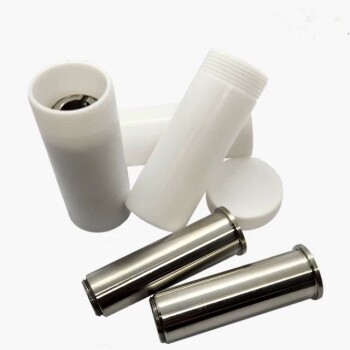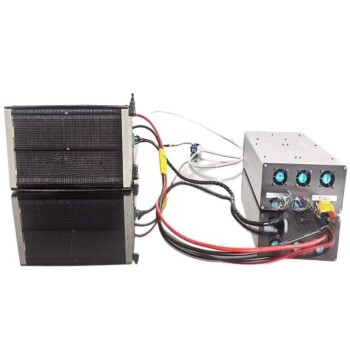A tyre pyrolysis plant is an advanced recycling system designed to process waste tires into valuable products such as tire oil, carbon black, steel wire, and gas. This process involves heating waste tires in an oxygen-free environment, breaking them down into their constituent components through thermal decomposition. The plant is highly efficient, environmentally friendly, and cost-effective, making it a sustainable solution for managing tire waste. It is widely used in industrial applications due to its ability to produce high-quality outputs, reduce pollution, and generate significant economic returns. The process is automated, energy-efficient, and meets stringent environmental standards, making it a preferred choice for large-scale recycling operations.
Key Points Explained:
-
Definition and Process of Tyre Pyrolysis:
- Tyre pyrolysis is a chemical decomposition process that breaks down waste tires into useful products like oil, carbon black, steel wire, and gas.
- The process occurs in a pyrolysis plant, where waste tires are heated in a reactor at high temperatures (typically above 430 °C or 800 °F) in the absence of oxygen.
- This thermal decomposition is irreversible and transforms the physical and chemical properties of the tires.
-
Products of Tyre Pyrolysis:
- Tire Oil: A high-quality fuel oil that can be sold directly or further refined into higher-grade products.
- Carbon Black: A valuable material used in industries such as rubber manufacturing, ink production, and construction.
- Steel Wire: Recovered from the tires and reused in various industrial applications.
- Gas: Produced during the process, which can be reused to fuel the pyrolysis reactor, enhancing energy efficiency.
-
Advantages of Tyre Pyrolysis Plants:
- Environmental Benefits: The process is eco-friendly, with systems like de-dusting and hydroseal preventing harmful emissions and pollution.
- Economic Viability: Low production costs and high profitability make it a lucrative investment.
- Efficiency: Rotary running ensures uniform heating, saving energy and improving output quality.
- Automation: Fully continuous plants are controlled by PLC systems, reducing labor costs and operational time.
-
Applications and Market Demand:
- Tyre pyrolysis plants are ideal for large-scale and industrial recycling operations.
- The end products, such as pyrolysis oil and carbon black, have strong market demand, ensuring steady revenue streams.
- The process aligns with global sustainability goals by reducing tire waste and promoting resource recovery.
-
Environmental Compliance:
- The equipment meets EU environmental standards, ensuring compliance with regulations.
- The process does not produce harmful substances, contributing to improved ecological conditions and soil quality.
-
Continuous vs. Batch Systems:
- Fully continuous pyrolysis plants offer higher efficiency, automation, and oil yield compared to batch systems.
- Continuous systems are better suited for large-scale operations, while batch systems may be used for smaller-scale projects.
-
Future Prospects:
- As global awareness of environmental issues grows, tyre pyrolysis plants are expected to play a crucial role in waste management and resource recovery.
- Technological advancements will likely enhance the efficiency and environmental performance of these systems, making them even more attractive to industries worldwide.
Summary Table:
| Key Aspect | Details |
|---|---|
| Process | Thermal decomposition of waste tires in an oxygen-free environment. |
| Products | Tire oil, carbon black, steel wire, and gas. |
| Advantages | Eco-friendly, cost-effective, automated, and energy-efficient. |
| Applications | Industrial recycling, resource recovery, and pollution reduction. |
| Environmental Compliance | Meets EU standards, no harmful emissions, and promotes sustainability. |
| System Types | Continuous (high efficiency) and batch (small-scale) systems. |
Ready to invest in a sustainable tyre pyrolysis plant? Contact us today to learn more!










